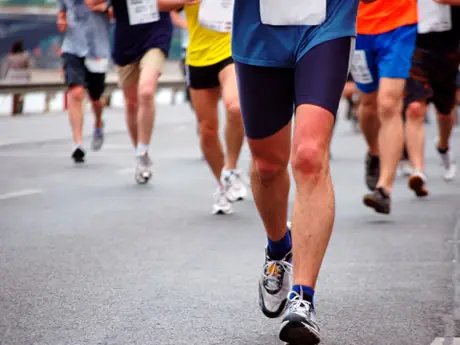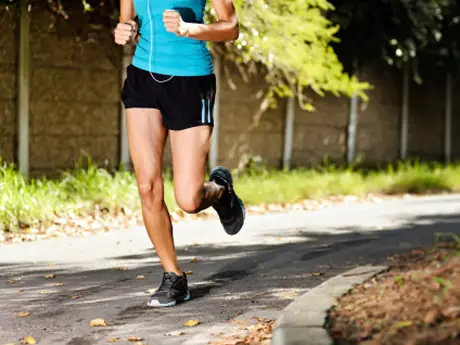There's not much benefit to running at 5K race pace other than to practice that pace since 5K race pace does not correspond to any physiological variable. 5K race pace is too slow for a VO2max workout and too fast for an AT workout. VO2max pace, which is the speed that can be maintained for about 7 to 10 minutes, is about 1- to 1.5-mile race pace for recreational runners and 3K or 2-mile race pace (10 to 15 seconds per mile faster than 5K race pace) for highly trained runners.
While reps lasting 3 to 5 minutes are ideal for training VO2max since they provide the greatest cardiovascular load, research has shown that shorter reps are also beneficial as long as the recovery intervals are very short to keep VO2 elevated between reps. An advantage of shorter reps is that you can accumulate a greater distance or total running time at VO2max pace in a single workout.
Regardless of the length of the reps you choose, the speed should be the same since the goal is the same: to improve VO2max. As you progress, make the workouts harder by adding more reps or decreasing the recovery intervals rather than by running faster. Only increase the speed of the workouts once your races have shown that you are indeed faster.
If running 800-meter reps in 3:30 (7:00 mile pace) elicits VO2max, running them in 3:25 (6:50 mile pace) will also elicit VO2max. But since the key is to run as slow as you can to obtain the desired result, don't run each rep in 3:25 when 3:30 will suffice.
Anaerobic Capacity Intervals
The purposes of anaerobic capacity intervals are to cause a high degree of muscle acidosis so you enhance your buffering capacity, to increase the number of enzymes involved in the metabolic pathway of anaerobic glycolysis (the breakdown of glucose) and to increase speed by recruiting fast-twitch muscle fibers.
The speed of these reps, which should be 45 seconds to 2 minutes long with recovery intervals up to twice as long as the time spent running, should be just fast enough to cause acidosis and recruit fast-twitch muscle fibers. That's about 400-meter race pace for recreational runners and 800-meter to mile race pace for competitive runners.
The next time you go out the door to run, ask yourself, "What's the purpose of this workout?"
If you run all of your workouts at the correct speeds, not only will you be rewarded with new personal records, you may even be able to tell someone at the track how fast to run.
 Sign up for your next race.
Sign up for your next race.- 2
- of
- 2
About the Author

Get ACTIVE on the Go


Couch to 5K®
The best way to get new runners off the couch and across the finish line of their first 5K.
Available for iOS | Android







Discuss This Article